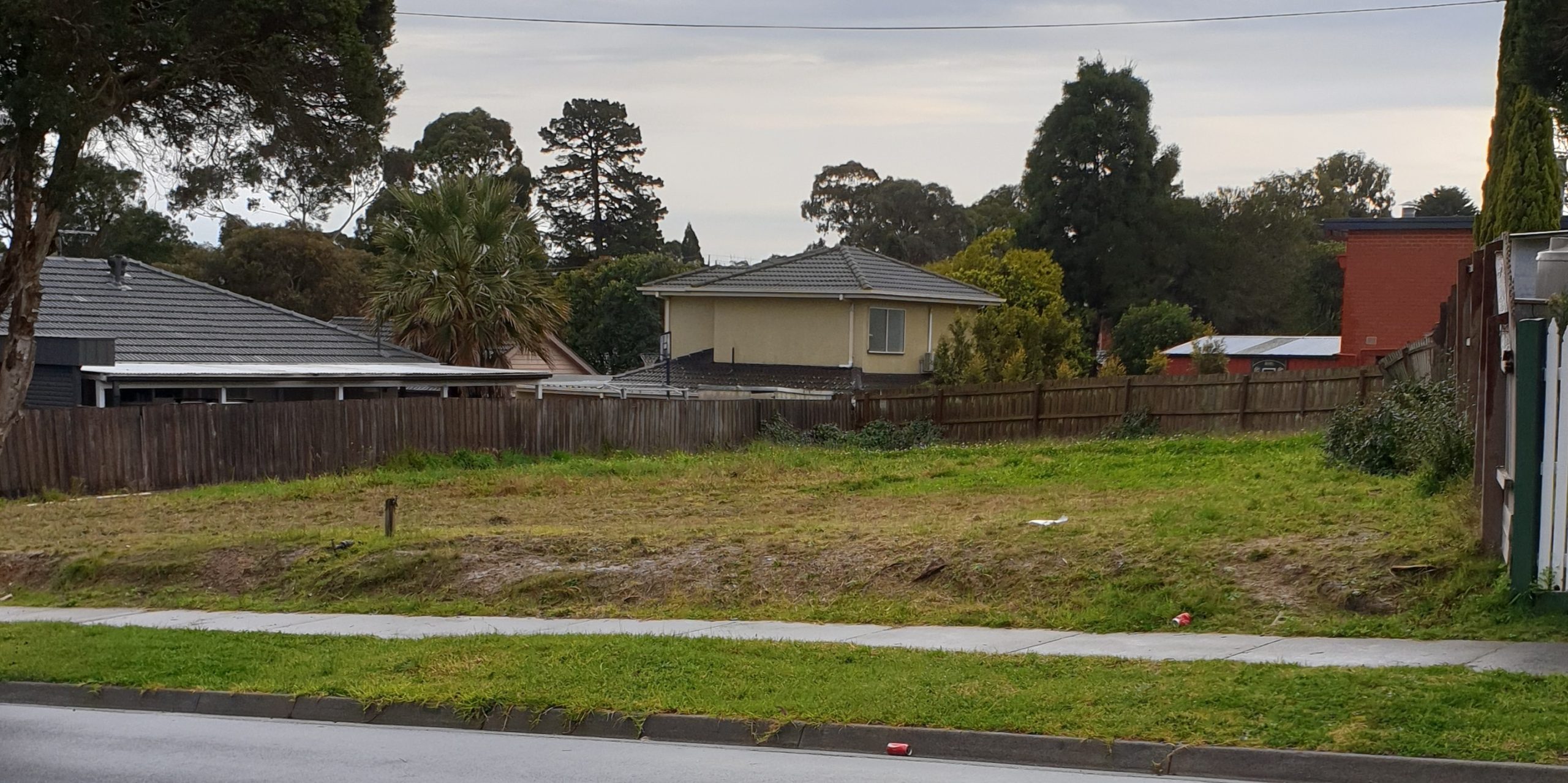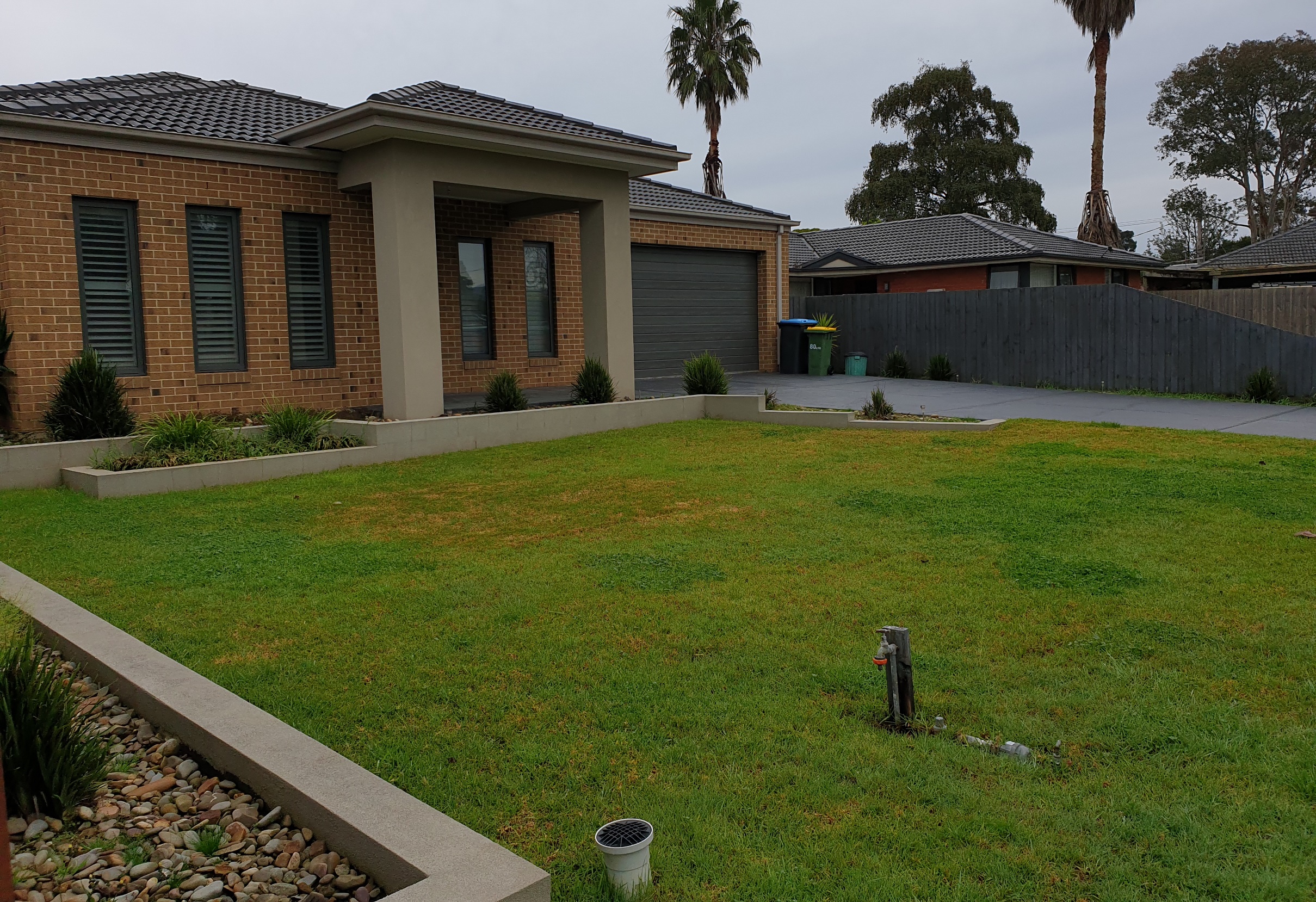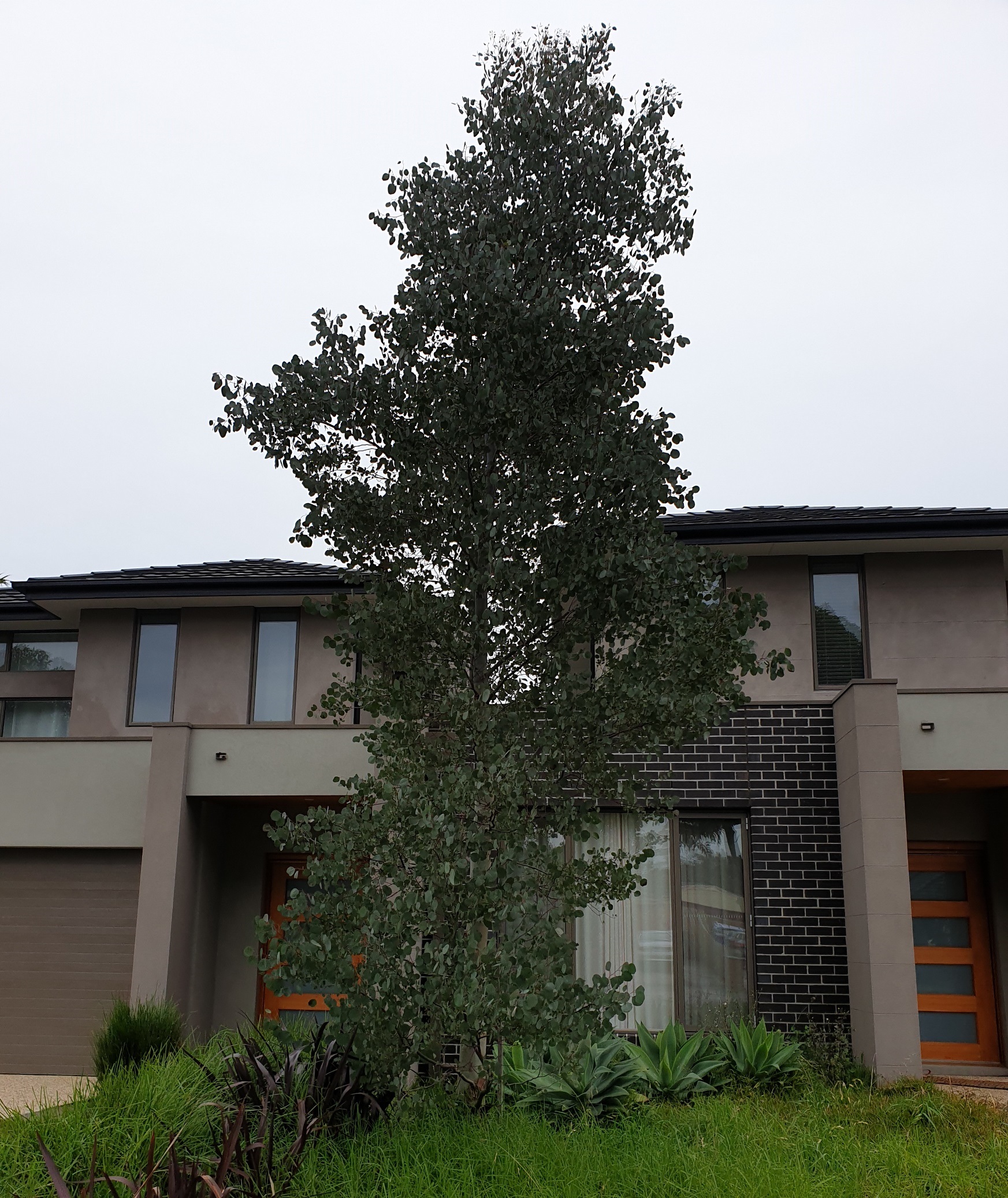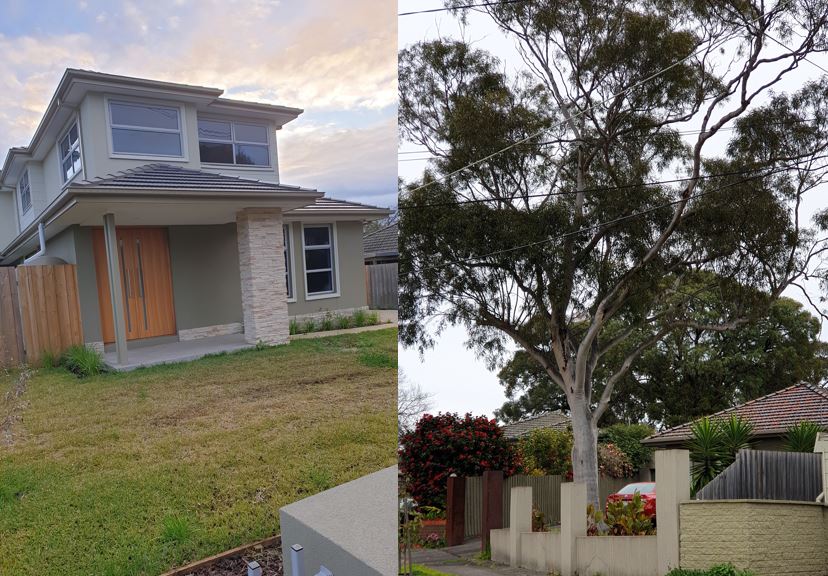In Melbourne, the term “leafy green suburbs” is often used to describe the most desirable, and so pricier, suburbs. When you’re looking around, there are trees in gardens, trees in the streetscape, trees, not rooftops, in the distance. The trees create a natural, ever-changing vista, which is preferable to a sea of concrete boxes and tiled roofs.
Then along comes a developer and turns that rundown eyesore in the street into this – an empty block. Compared to what was there before, that might seem like an improvement! But what if that’s done to every block in the street? Soon the leafy green suburb would become a distant memory.

It’s not hard to understand why a developer wants a blank canvas to work with. Requirements around garden space and open space are getting harder to meet while still achieving a good outcome in terms of house design in a small space. Trees can get in the way during construction. Councils are getting more demanding around tree preservation – I’ve heard of requirements to essentially build a new driveway as a bridge, to avoid compressing the roots of a tree – that’s located on a neighbour’s property.
So as a developer there’s a lot of motivation to remove everything before applying for development approval. Maybe even knock on the neighbour’s door and slip them a wad of cash before sending round a tree removalist to get rid of the problem tree in their backyard.

Then after the development is built, the quickest and cheapest landscaping is to do as little as possible, certainly not replacing the trees that were removed to begin with. While this may give a neat and tidy look initially, the sheer visual bulk of concrete buildings unbroken by greenery ruins the appeal of the street, and before long the leafy green suburb is not so leafy and starts to lose value.
Melbourne does have a proud history of providing trees on nature strips, but as a developer it’s worth remembering that street appeal means a lot to a potential buyer or renter, and so taking steps to preserve or replace trees within the boundary of your property is in your best interests too.

Look to see if there’s a mature shrub or tree that falls into the setback zone at the front of the house, perhaps off to one side, that could potentially work with the design and be protected during construction.
Or as part of the landscaping, aim to plant at least a couple of more mature trees that can grow into bigger ones, so they break up the bulk of the building initially, and down the track provide shade to the building and beauty to the streetscape.
It’s in the best interests of everyone to think tree!


